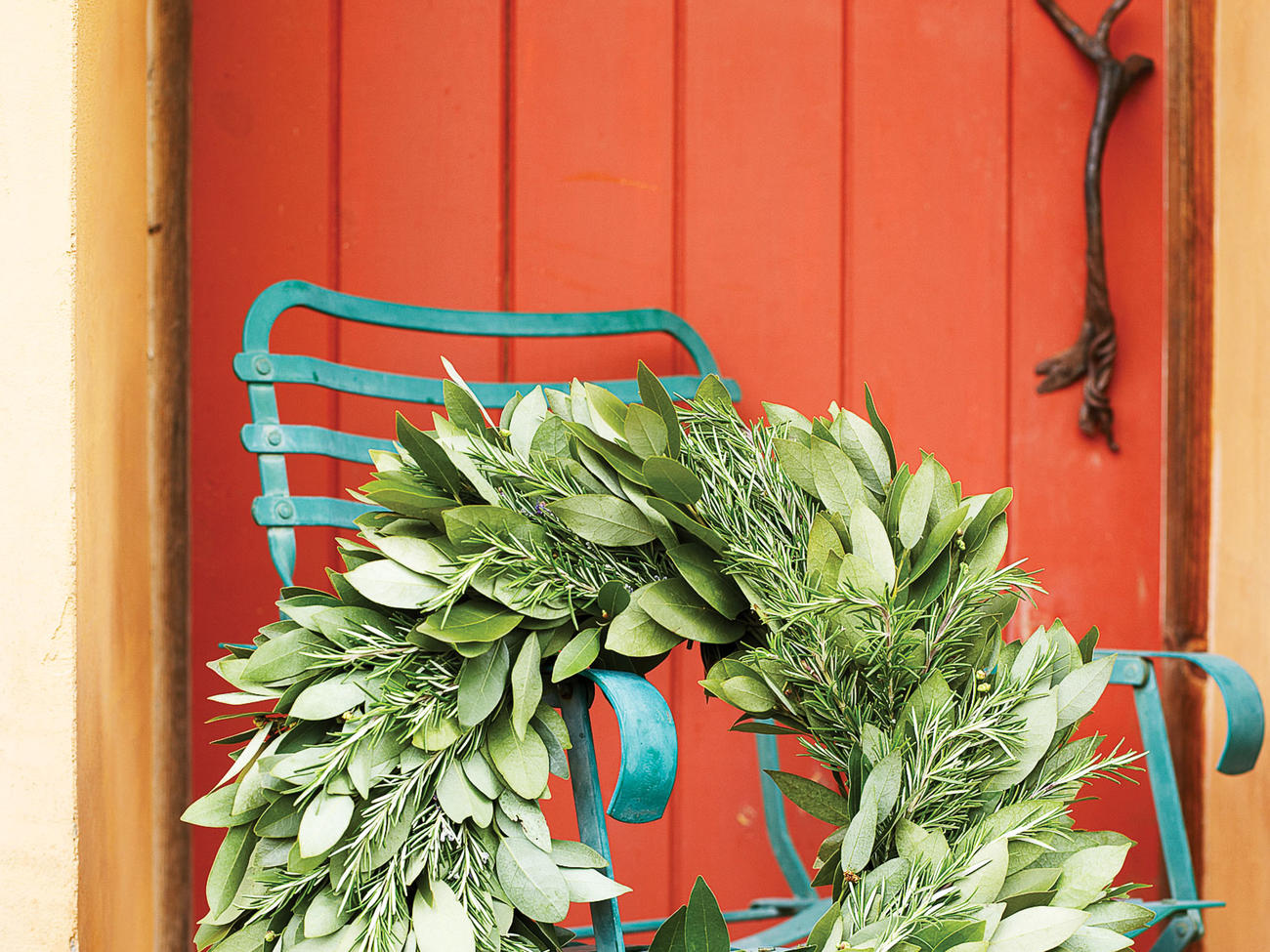
Four Steps to the Perfect Wreath
Get the how-to from a California designer who loves to work with fresh, foraged materials.

Thomas J. Story
Bay and rosemary leaves form a wreath that holds its fragrance for more than a week.
It’s a misty winter day at Harms Vineyards and Lavender Fields in Napa, California, and Mercedes Feller is doing what she loves to do this time of year.
Stepping onto a picnic bench set at the base of a venerable oak, she reaches into the branches to prune out a few twigs and tendrils of lichen. She’ll spend the rest of the morning gathering greenery to make her specialty: “wild-crafted” wreaths that are as elegant as they are simple.
Although the farm supplies Feller with lavender for wreaths in the summer, those plants are flowerless mounds now, cut back and sleeping for winter. So wild crafting―using materials gathered from plants that grow naturally―is the order of the day.
